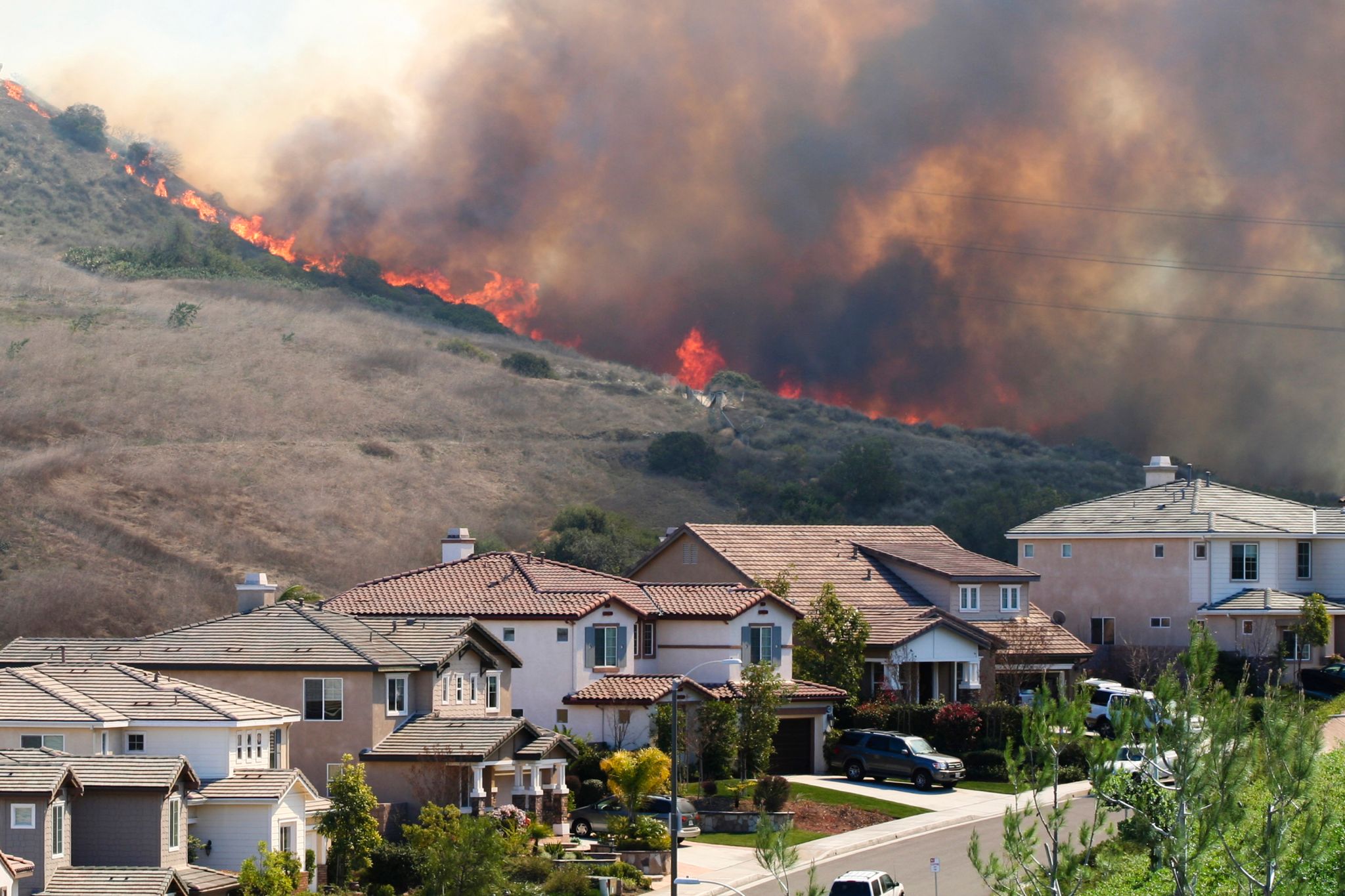How do most homes ignite during a wildfire? Embers and small flames are the main way most homes ignite in wildfires, according to the National Fire Protection Association. The wind can carry embers — burning pieces of airborne wood or vegetation — more than a mile to cause spot fires and ignite homes, debris, and other objects.
The Energy, Minerals and Natural Resources Department New Mexico cites two additional causes. Surface fires usually begin as small flames that can burn through grass and ground litter and touch a house, fence, or deck. Crown fires can start with large flames burning in the tops of trees, which can radiate heat that ignites wood walls. Other types of large flames can come from detached buildings, burning wood piles, or ignited vehicles.
With that in mind, fortify your home like the castle it is with these 13 wildfire-repelling steps. But keep in mind that no product or technique is a failsafe against a raging fire.
#1 Check Smoke and Carbon Monoxide Detectors
If you don’t already have working smoke detectors or haven’t tested them recently, make that your No. 1 job. Now.
#2 Check Fire Extinguishers
And if you don’t have them, get them and use them correctly.
#3 Get a Bucket, Shovel, and Hose Ready
Have an easily accessible bucket, shovel (to dig a trench to protect against encroaching ground fire), and connected garden hose to help you defend the area around your home.
#4 Invest in Rain Barrels
An extra source of water can’t hurt. And rain barrels save on your water bills, too.
#5 Clear Yard of Debris
Keep gutters, porches, and the lawn free of debris, leaves, and fallen branches. If a fire threat is imminent, remove furniture and decorations from decks and porches, including welcome mats.
#6 Plant Fire-Resistant Shrubs and Annuals
Irises, rhododendrons, hostas, and lilacs are good choices because they have high moisture content. Your local Cooperative Extension Office can advise you on appropriate species for your area.
#7 Remove Tree Branches Lower Than 6 Feet
Fires tend to start low and rise. So, don’t plant shrubs directly under trees. They can combust and cause the fire to rise up the tree. By the way, spacing out all plants and shrubs is a good practice, too.
#8 Remove Tree Limbs Near Chimneys
Keep them at least 10 feet away. Embers from burning limbs could fall in.
#9 Set Up a Protective Perimeter
Create a 100-foot perimeter around your home that's free of dry leaves, grass, and shrubs, which fuel wildfires. Keep petroleum tanks, cars, and wood piles outside of this safe zone.
#10 Use Rocks Instead of Mulch Next to the House
Lay a six-inch swath of decorative rocks closest to the home and use mulch from there. This also helps repel insects like termites, (bugs can be attracted to wood) and facilitates rain water drainage.
#11 Use Nonflammable Fencing
If you have wood fencing around your home, replace any three-foot sections that attach to the home with metal or other nonflammable fencing material. A metal gate or decorative fencing piece is stylish and unfriendly to fire.
#12 Cover Chimneys and Vents With Flame-Retardant Mesh
It’s inexpensive to do. Mesh covers cost less than $10 and are available online.
#13 Check Your Siding
Fire-resistant or noncombustible siding, like stucco or brick, protects the best against fire. Make sure your siding, whatever type, is in good repair. If the plywood or insulation is exposed, the home is more vulnerable to flames.
Some experts recommend spraying homes with fire retardants, which can cost around $600 and up, depending on the product, region, and size of the project. But some of the chemicals used to make flame retardants have toxic properties. Although you might have less exposure to chemicals used on your home’s exterior than those inside, toxicity issues could still be a factor.
Most important, if a wildfire is on its way, evacuate. And have an evacuation plan worked out with your family before the worst happens.
